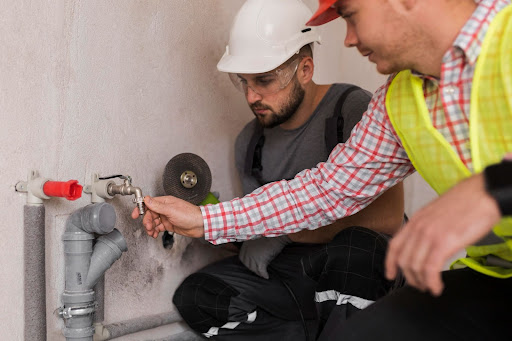Water heaters are essential appliances in our homes, providing us with hot water for various daily tasks like bathing, washing dishes, and doing laundry. However, like any other household appliance, water heaters are not immune to problems. When your water heater starts acting up, it can be frustrating and inconvenient. In this blog post, we will explore some of the most common water heater issues and provide you with practical solutions on how to fix them.
Lack of Hot Water
One of the most common issues people face with their water heaters is a lack of hot water. If you turn on the tap, expecting a warm, soothing shower, but instead, you get a burst of icy cold water, it’s time to investigate. Several factors can lead to this problem:
- Sediment Buildup: Over time, sediment can accumulate at the bottom of the tank, insulating the heating element from the water. To fix this issue, you can flush the tank to remove the sediment. Here’s how:
- Turn off the power supply to the water heater.
- Connect a garden hose to the drain valve at the bottom of the tank.
- Open a hot water tap in your house to relieve pressure and allow air to enter the tank.
- Open the drain valve and let the water and sediment drain out.
- Close the drain valve, disconnect the hose, and turn the power back on.
- Faulty Heating Element: If sediment is not the issue, you may have a faulty heating element. Electric water heaters typically have two heating elements. You can test them with a multimeter and replace the faulty one if necessary.
- Thermostat Problems: Sometimes, the thermostat settings might be too low or malfunctioning. Make sure the thermostat is set to the desired temperature. If it’s still not heating properly, consider replacing it.
Water Heater Leaks
A leaking water heater can be a major cause for concern as it can lead to water damage and increased utility bills. Leaks can occur for several reasons:
- Pressure Relief Valve: The pressure relief valve, which is a safety feature, may leak if it’s defective or if the water pressure inside the tank is too high. You can replace a faulty pressure relief valve, but it’s crucial to ensure the pressure isn’t too high as well.
- Tank Corrosion: Corrosion can cause small holes in the tank, leading to leaks. Unfortunately, if the tank is severely corroded, the best solution may be to replace the water heater.
- Loose Drain Valve: Sometimes, the drain valve at the bottom of the tank can become loose or faulty, causing a leak. Tighten or replace the valve as needed.
Strange Noises
If your water heater is making strange noises, such as popping, cracking, or rumbling sounds, it could be due to sediment buildup in the tank. As mentioned earlier, sediment can accumulate at the bottom of the tank, causing the heating element to overheat. This overheating results in the noises you hear. To resolve this issue, follow the same steps mentioned for sediment buildup in the “Lack of Hot Water” section.
Rusty or Discolored Water
If you notice rusty or discolored water when you turn on the hot tap, it may be a sign of corrosion inside the tank. While this can be a serious issue, there are some steps you can take to address it:
- Flushing the Tank: Flushing the tank can help remove some of the rust and sediment that may have accumulated. Follow the same steps as mentioned in the “Lack of Hot Water” section.
- Anode Rod Replacement: Water heaters have sacrificial anode rods designed to corrode in place of the tank. If the anode rod is heavily corroded, it’s time to replace it.
- Tank Replacement: If the tank itself is severely corroded, it’s best to replace the entire water heater to ensure your water remains safe and clean.
Water Heater Not Turning On
If your water heater is not turning on at all, it could be due to several issues:
- Power Supply: Check if the water heater is receiving power. Ensure the circuit breaker is not tripped and that the pilot light is lit for gas water heaters.
- Thermostat Issues: If the thermostat is malfunctioning, it can prevent the water heater from heating the water properly. Test and replace the thermostat if needed.
- Thermocouple Replacement: For gas water heaters, a faulty thermocouple can also prevent the pilot light from staying lit. Replacing the thermocouple can solve this problem.
Inconsistent Hot Water Temperature
Inconsistent hot water temperature can be frustrating, especially if it fluctuates between scalding hot and freezing cold. The following issues can lead to this problem:
- Thermostat Settings: Check the thermostat settings to ensure they are correctly adjusted. If not, set the temperature to your preferred level.
- Dip Tube Replacement: The dip tube is responsible for directing cold water to the bottom of the tank. If it’s broken or damaged, it can cause inconsistent hot water temperature. Replacing the dip tube can help.
Fixing Water Heater Issues with Tap 2 Drain Plumbing
Understanding and addressing common water heater issues is essential for ensuring the uninterrupted flow of hot water in your home. At Tap 2 Drain Plumbing, we recognize the importance of a properly functioning water heater in your daily life. Whether it’s sediment buildup, leaks, strange noises, rusty water, or thermostat problems, being aware of the potential culprits and knowing how to fix them can save you both time and money.
While many of these issues can be resolved with DIY solutions, don’t hesitate to reach out to our team of experts for professional assistance and maintenance services. With the right knowledge and proactive measures, you can keep your water heater running smoothly, providing you with the comfort and convenience you deserve.

